PART 2 (1923-1935)
A forward thinking group of likeminded people pioneered radio in Western Australia. Wireless communications enabled motivated people to exchange knowledge and ideas for the first time, regardless of distance and isolation. Much as the Internet does today.
The people with the know how to make radio happen sprung from the early enthusiasts and experimenters, financed by local businessmen, and supported by performers from serious theatre, vaudeville and the musical fraternity. They utilised overseas inventions combined with local innovations for the betterment of all Australians. From the Royal Flying Doctor Service to radio news, information and entertainment.
In 1923, a small group of likeminded people formed the Subiaco Radio Society, which grew in influence until the wars intervened, to then resume activities once peace was restored. The capacity for two way communication by Morse code around the world, was responsible for the rapid growth in amateur radio in the US, Britain, Europe and Australia, until the security considerations caused it to be halted for military reasons during war. The Radio Society of Western Australia was formed in 1948, with its origins based in the Subiaco Radio Society.
Many of the early members of the Subiaco Radio Society became prominent figures in radio in Western Australia. Wally Coxon (VK6AG) became chief engineer and manager of 6WF, Bill Phipps (VK6WP) became the chief engineer of Whitford’s Broadcasting Network and Harry Simmons (VK6KX) became the chief engineer of West Australian Broadcasters. As 6ML and 6IX broadcast out of the same building, Harry Simmons was the chief engineer of both. Wally Coxon later became the station manager and supervising engineer of 6AM in Northam.
Prior to 1923, the radio manufacturing industry in Australia, led by George Fisk of AWA, lobbied the Government for the introduction of radio broadcasting for the public consumption. The first concept involved sealed set regulations where stations could be licensed to broadcast and the receiving device would be set to receive only that station. 2FC and opponent 2SB (later to be called 2BL) in Sydney were the first to be licensed on 1st July 1923. This proved unpopular with potential listeners, so in 1924 the Government introduced a two tiered system, the A-Class licences to be largely financed by listeners’ licence fees and were able to take limited advertising, and B-Class licences that would have to generate their own revenue through advertising.
In 1924, Western Farmers Limited (Wesfarmers) began operating radio station 6WF on an A-Class licence from the top floor of the company’s Wellington Street building. The top floor was divided into two studios, the smaller used for news broadcasting, the larger for music and entertainment. The studios were fitted with the latest equipment with the wall cavities filled with sawdust for soundproofing. The transmitter mast had two massive radio towers, each weighing 3.5 tons located on top of the building. 6WF was initially a long-wave station with 5 kilowatts of power on 1250 metres, 240 kHz, until the Australian Broadcasting Company took over five years later and it left long-wave and moved to 690 kHz on the mediumwave band on September 2, 1929. The first manager and chief engineer of 6WF was Walter Coxon, who aquired the first Experimental Broadcast License in Western Australia (6AG), after becoming interested in wireless experiments as far back as 1907. He gained his Proficiency in Radio with the North Eastern School of Wireless and continued there for some time as an instructor. The UK based school was founded in 1911 to train Radio Officers for the Merchant Marine, then affectionally known as ‘Sparks’. Radio Officers on ships not only operated the radio equipment, but also repaired and maintained it, so this was an excellent grounding for a pioneer in the new industry.
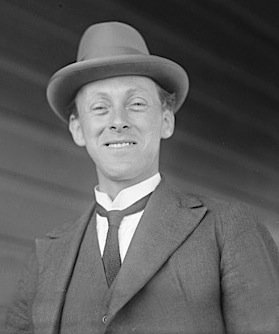
W.E. Coxon, first Manager of Radio Station 6WF
He was described as “The Father of Radio in Western Australia”. Not only designing and building the station but also the ‘Mulgaphone’ radio receivers, with 1,200 being sold by 6WF. Sets in Perth were initially fixed to receive one station, but within the first month of operation the sealed set system was abandoned by the government and the Mulgaphones were re-designed, making it possible to receive stations in wavelengths within the range of 250 metres (1200 KHz) to 2000 metres (150 KHz). There were a number of models manufactured, that ranged from a simple crystal set without amplification, which required headphones, to a valve amplified version that enabled a group of listeners to monitor via a horn loudspeaker. Walter Coxon also pioneered the technical work for the Royal Flying Doctor Radio Service in Western Australia.
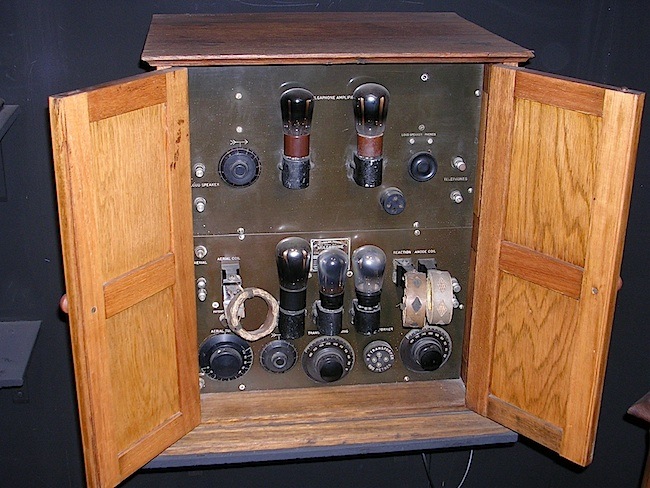
A ‘Mulgaphone’ radio receiver
For the first three months of 6WF’s operations only 300 licences were taken out, but after the Royal Show of 1924 they showed a considerable increase. At first sealed sets were in use, but this was soon abandoned, and the real increase in licences dated from the time when open sets came into use.
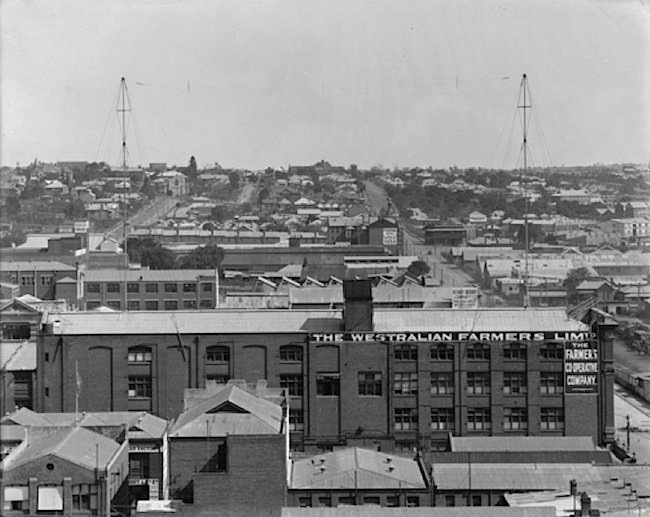
1924 – Original 6WF mast on Wesfarmers building, Wellington Street, Perth
For the next few years, 6WF provided a bridge between city and country – alongside the live theatrical performances and musical recitals was information about the weather and stock prices. Harold Wells had the distinction of being the first radio announcer in Western Australia. The listener’s annual fee was £4/4/- plus 10/- to the Postmaster-General’s Department, which was the supervising authority.
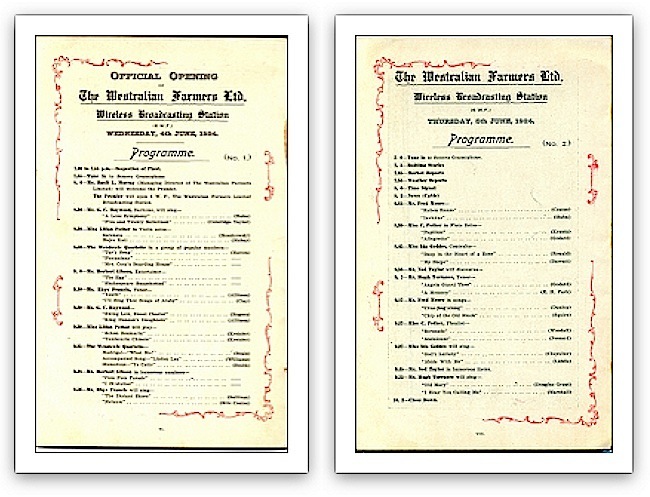
(Courtesy of Richard Ashton whose Aunt Lil (Miss Lilian Pether performed on the opening night) whilst Aunt Connie (Miss Constance Pether) performed on the second night)
Outside broadcasts were a feature of 6WF with the first political speech broadcast from the Queen’s Hall, in William Street, Perth, on Friday, March 13, 1925, the first theatre broadcast was a vaudeville programme from the Luxor Theatre in Beaufort Street, Perth, on Wednesday, March 18 1925, and a harness racing event from the W.A. Trotting Association track on the perimeter of the Western Australian Cricket Association Ground on Saturday. April 11, 1925, followed by the play “Peg of My Heart” from His Majesty’s Theatre, Perth, on Wednesday, May 27, 1925.
In 1926, the Applecross Wireless Station became a feeder station for international radiograms. In addition, a short wave experimental broadcasting station run by AWA shared the facilities with the commercial radio station 6PR from 1931 and the Police radio network.
In 1927, AWA installs a short-wave ‘Beam System’, which extends the transmitting range of the station enabling, direct communication between England and Australia.
The Royal Flying Doctor Service of Australia (RFDS, informally known as The Flying Doctor) began in 1928, and by 1934 was spreading nationally. The pedal radio became synonymous with the early Flying Doctor service. It was a radio powered by a pedal-driven generator, developed by Alfred Traeger in 1929, as a way of providing radio communications to remote homesteads in the Australian outback. There was no mains or generator power available at the time and batteries to provide the required power would have been too expensive. The School of the Air, which links outback students with centralised teachers, until recently used the same radio equipment as the RFDS. This has now been surpassed with the availability of internet services.
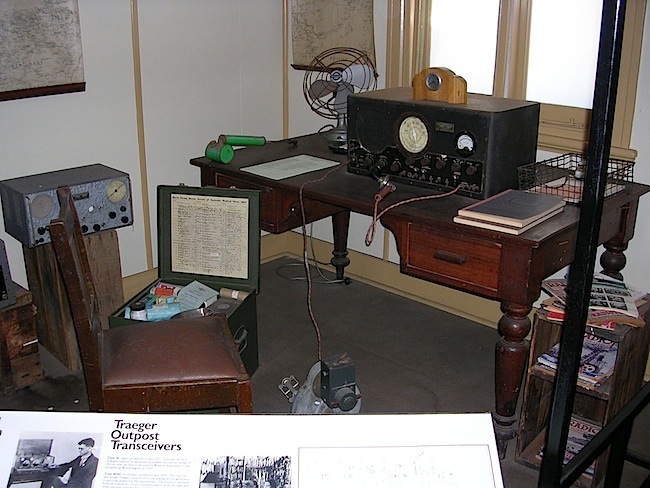
The RFDS exhibit at the Wireless Hill Telecommunications Museum
In 1929, radio station 6WF was taken over by the Australian Broadcasting Company and moved from the Wesfarmers building to the first floor of the English, Scottish and Australian Bank (E.S. & A.) building at the corner of Hay and Milligan Street, Perth. It was an an A-class radio station funded by listener licence fees.
This came about as a result of a Royal Commission in 1927, and at first only the plants were taken over, and it was then decided to reduce the long wave-length of 6WF. This was done by altering an already obsolete plant, rather than installing a new one and the result was the loss of efficiency. The next step was to call for tenders for programs and the contract fell to the Australian Broadcasting Company, which appointed Former Sydney radio 2BL announcer and sports commentator Mr. Basil Kirke as manager of 6WF. Kirke was full of energy and drive and attracted listeners with daring antics such as broadcasting from the seabed off Cottesloe and from inside Yallingup caves.
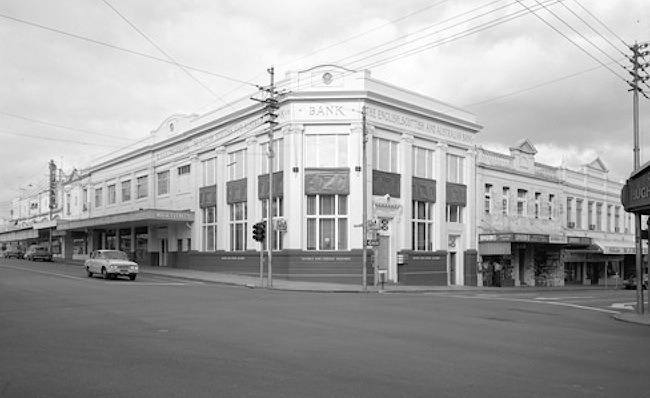
ABC’s Perth home from 1929 to1937
In 1928, many professional musicians, who had supported the silent movies, found themselves out of work, and under the direction of Harold Newton, formed the Perth Symphony Orchestra, with many of the concerts broadcast by radio station 6WF.
Under Basil Kirke’s direction, 6WF extended its programs and introduce new features.The value of this was shown by the rapid increase in licences, so that after three years, the company had increased the licences from 3,900 to 12,500 by 1932.
All programs went to air live in the early days. It was not until 1935 that disc recorders started being installed in ABC studios. It was the only means for recording program material until the arrival of tape in the 1950s. Drama was one of the most demanding forms of live performance with complex sound effects and mood music added. Many plays were specially adapted for radio, including the classics, for all 36 of Shakespeare’s plays were produced and broadcast from 1936 to 1938.
In 1930, Perth was connected to Adelaide (and subsequently the rest of the eastern states) by a telephone line and the first overseas calls from Australia became possible with the introduction of a radio telephone service to England, and through there to Europe and America. A similar service opened to New Zealand in the same year.
In 1930, Musgrove’s Limited opened their station 6ML (on 19th March 1930). The 6ML call sign was taken from the initial letters of the owners, Musgrove’s Limited. The transmitter, which was largely built by Harry Simmons, was housed on the top floor in a screened room, with a long wire antenna strung from the top of Musgroves limited to the top of the Post office building. The 6ML Cheerio Club gained much popularity in those early years with a membership running into thousands. It evolved from the Fox Hoyts Radio Club which conducted weekly dances at Lyric House, until that venue became too small requiring a shift to the Embassy Ballroom, where over 800 members would gather each Wednesday night. Club members also turned up in hundreds to hikes, zoo picnics and other social functions. Mr F.C. Kingston, a founder of Musgrove’s, was the station director and a director of WA Broadcasters Limited. He also was in control of the radio, record, phonograph and refrigerator departments at Musgrove’s Limited. According to the West Australian newspaper, October 20 1953, “Station 6ML volunteered its broadcasting licence to the P.M.G. Department when most of the staff left to join the armed forces during World War II.”
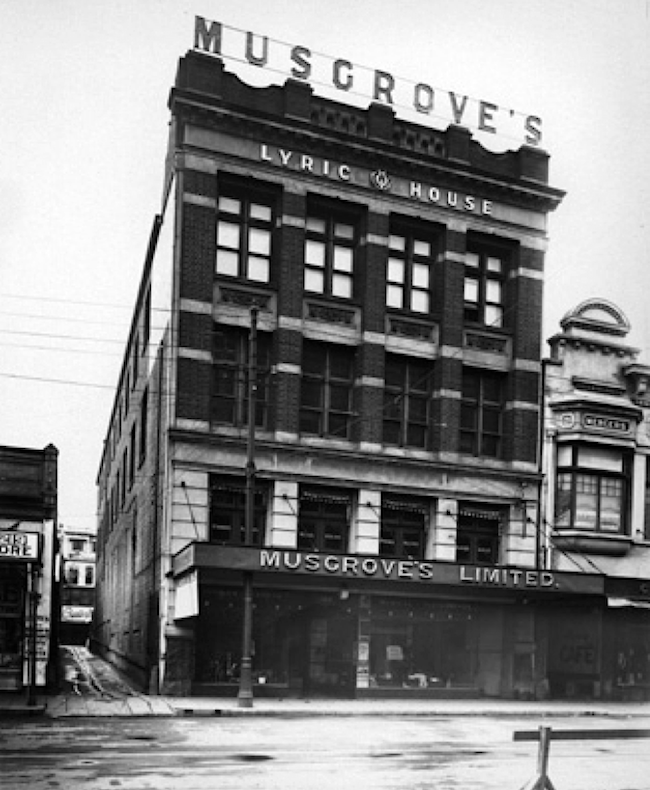
1920 Musgroves
In 1931, Radio Station 6PR begins broadcasting via the Applecross Wireless Station. 6PR was then owned by Nicholson’s Limited, with studios located on the second floor of their music shop at 86 Barrack Street, Perth.
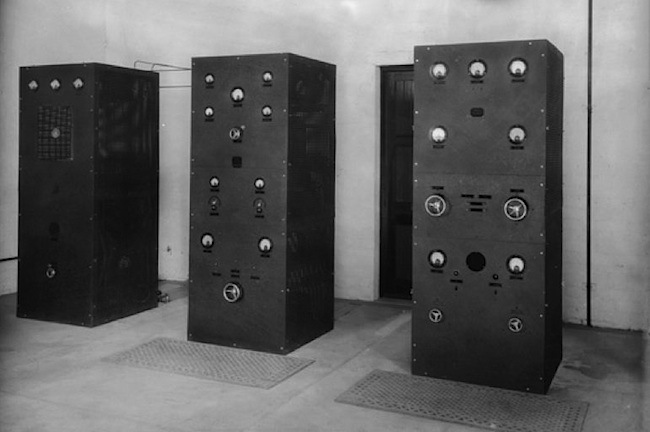
6PR’s AWA transmitter installed at the Applecross Wireless Station in 1931
6PR’s original broadcast frequency was 880 kHz, which it retained until 1978 when it moved slightly up the dial to 882 kHz with the advent of 9 kHz spacing on the AM dial. The station still broadcasts on that frequency today.
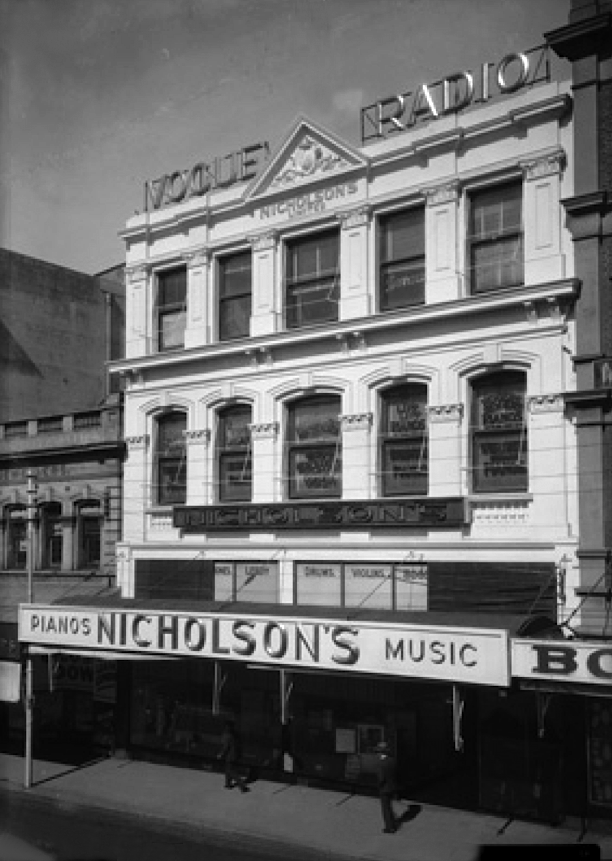
Nicholson’s Broadcasting Service Pty Ltd – 6PR Studios in Barrack Street, Perth
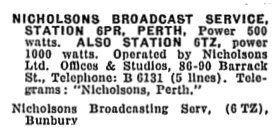
6KG Kalgoorlie also commenced broadcasting in 1931 with Arthur Taylor as manager and engineer, after being a radio amateur and involved in the early Flying Doctor service in WA. Transmission hours were 8 am to 1 pm and 5 pm to 10.30 pm, broadcasting on 500 watts, 246 metres. 1,200 Kilohertz, in the centre of the main gold-producing areas of Australia. Live music was a feature of early radio stations and 6KG was no exception having its own studio orchestra made up of many solo artists, who themselves provided a great variety of programming. Gradually the commercial stations moved towards recorded music, particularly when the 1960s hit parades really took off. The ABC was the last bastion of live music, with each state having a close relationship with a symphony orchestra, until there was an organisational split and the orchestras went out on their own.
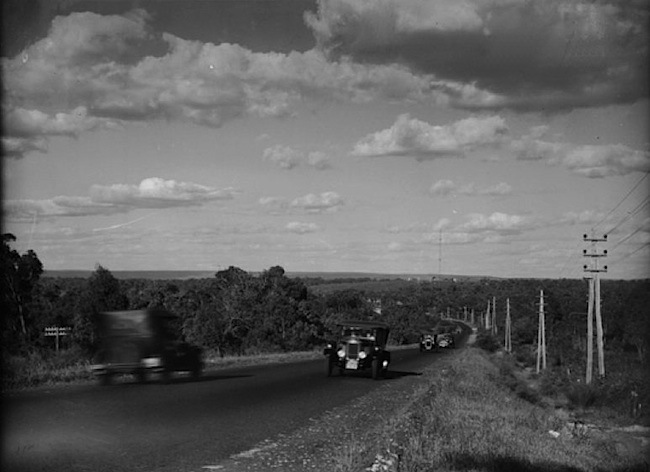
1932 Canning Highway, Applecross Wireless station mast in background
In 1932, the Australian Broadcasting Commission Act was passed, following which The Australian Broadcasting Commission took over the premises from the Australian Broadcasting Company, and the 6WF transmitter was relocated to Wanneroo (now called Hamersley). As part of its charter, the ABC was to establish broadcast orchestras in each state with WA concerts performed initially in His Majesty’s Theatre and then later in the Capitol Theatre and Winthrop Hall. Then in 1950 the state government and Perth City Council made funds available to subsidise the orchestra, which led to the West Australian Symphony Orchestra being formalised. In 1997, the ABC divested all ABC orchestras from the Concerts department of the ABC into separate subsidiary companies, including a service company known as Symphony Australia. The West Australian Symphony was incorporated in January 1998.
From 1932 to 1936 ABC stations in each State provided news bulletins by having the duty announcer read local and foreign news items straight from the newspapers.
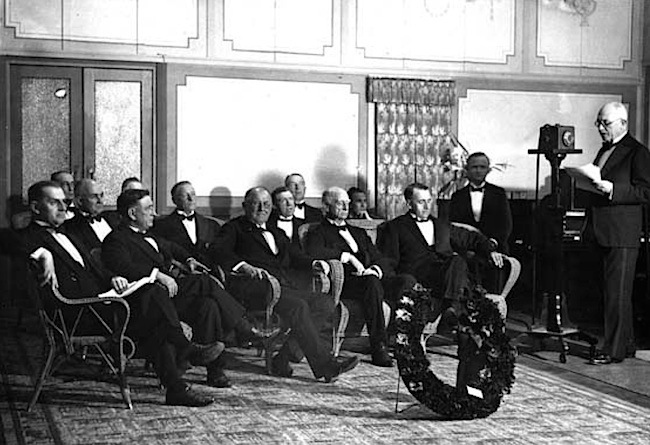
The official opening of Radio Station 6IX by the President of the Legislative Council Sir J. Kirwan, 30th Nov. 1933
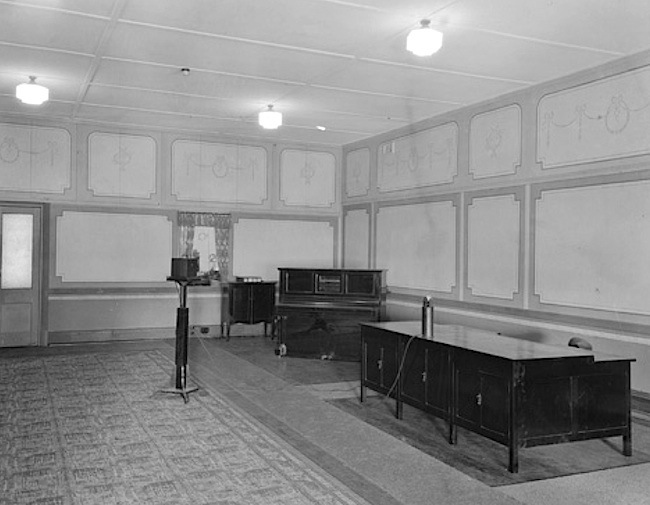
6IX Radio Studio in 1933
In 1933, the W.A. Broadcasters Ltd owned 6IX was officially opened on the 27th November with its first studios situated above the Musgroves shop, known as Lyric House, Murray Street, Perth. The transmitter: was located on the roof of Newspaper House in St. George’s Terrace, Perth. The service was broadcast first on a wavelength of 204 metres at 300 watts to later change wavelength to 242 metres (1240 kilohertz) at a power of 500 watts. During the evening sessions 6IX presented hourly news bulletins from the offices of the West Australian newspaper. The station was half owned by Musgrove’s and WAN.
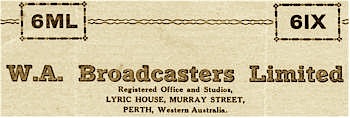
From 1934, synthetic cricket broadcasts were broadcast by the ABC, where commentators in Sydney recreated the game as it was being played in England. It was an era when the Telex network took off, whereby teleprinters were used to send text based messages, rather than operators doing so manually with morse code. Details of the match were sent this way from the cricket ground in England, quickly read and broadcast as a simulation of a real live commentary team, complete with the sound of a wooden pencil striking the desk and sound effects of a crowd. These fake broadcasts proved to be incredibly popular. Alan McGilvray AM MBE (1909–1996) was one such person who participated in this practice and whose commentating career began in the 1930’s and spanned over 50 years.
In 1934, the ABC hired its first journalist and the first Federal News Editor was appointed in 1936 to control a national news service which was relayed to all States except Western Australia. the ABC in Perth relied heavily on the BBC news which was received by the PMG run Byford receiving station and sent by landline to the studio. Meanwhile, Dick Collins would cut up the Daily News and paste up a compilation of stories for the announcers to read in Perth.
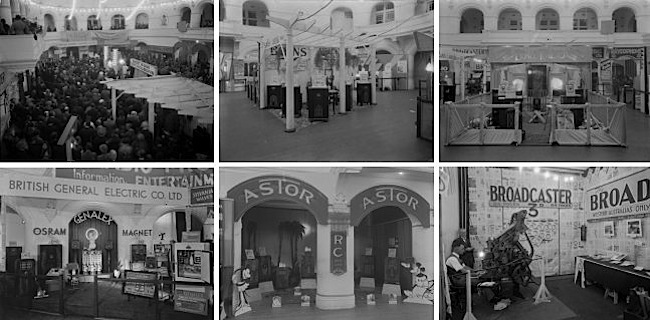
1934 Radio & Electrical Exhibition at Government House Ballroom
Vendors at the 1934 Radio and Electrical Exhibition included Boans, Nicholson’s, Thompson’s Limited (Beall Radio), RC Pty Ltd (Astor), British General Electric Co Ltd (Sylvania Valves, Osram, Magnet and Genalex), MJ Bateman (STC Radio), Wyper Howard Ltd (Radiolla) and the Broadcaster magazine.
Radio Programs broadcast on Saturday 10 March 1934
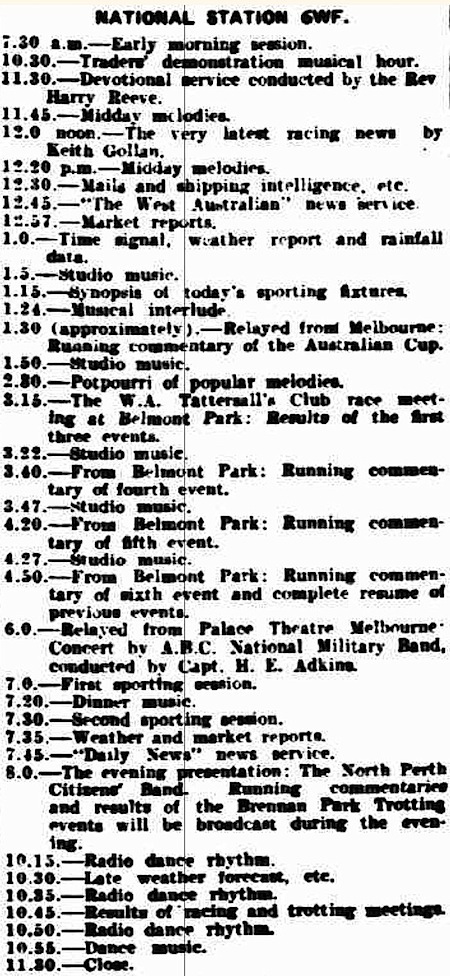
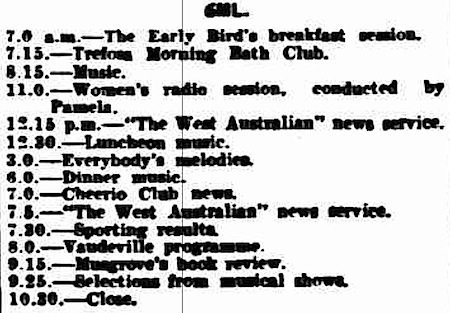
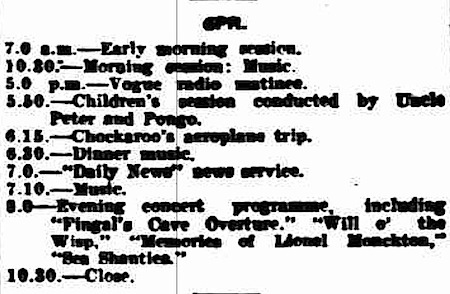
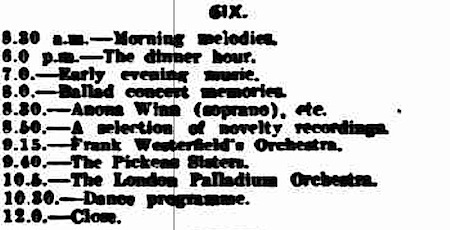
As an alternate source of radio programs, the British expatriates could tune in to the BBC Empire Service from 1932, which was broadcast from the English town of Daventry, located 77 miles (124 km) north-northwest of London. The radio announcement of “Daventry calling” made the town well-known across the world.
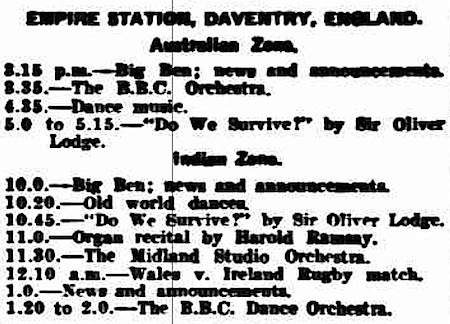
Meanwhile, there have been two 6BY’s in Western Australia, the original station was at Bunbury. It was formed by a consortium of businessmen in the town as Bunbury Broadcasters. The studio and transmitter was situated in the Bedford Hall beind the Haywards Building the antenna was a long wire and this was still in place in 1960. The station 6BY went on air in 1933, power rated at 1000 watts, Clarence Serl the former Chief Engineer of 5KA Adelaide, built the equipment on site. The first woman announcer was a Miss Higgins. This station closed down in 1935.
6AM Northam commenced broadcasting on 1st June 1934, as Northam Broadcasters Limited, twenty years before the 6NM (ABC Midwest & Wheatbelt service) on 24th June 1955. The 1934 post office directory has Northam Broadcasters office located at 23 William Street, Perth. Frank Whitford was managing director, with brother Archer as chairman of directors and David White secretary. Both Whitford brothers spend their early years in the goldfields.
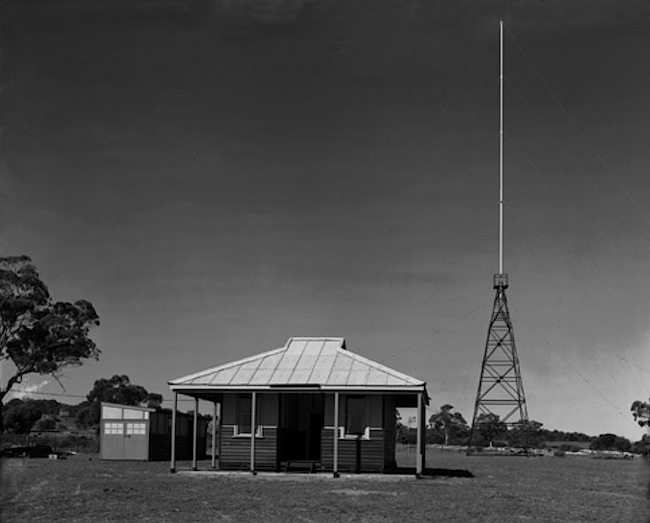
6AM Northam Transmitter Site in 1934
The 6AM transmitter was completely built in six months by Wally Coxon (who earlier built the first 6WF transmitter). He then became the station manager and supervising engineer.
By the 1930s country music was an established part of rural life in Australia, due in part to the widespread popularity of radio. Early stars were Tex Morton (1916 – 1983), Buddy Williams (1918-1986), Shirley Thoms (1925-1999) and Smoky Dawson (1913-2008).
In 1935, the Flying Doctor service started in W.A.
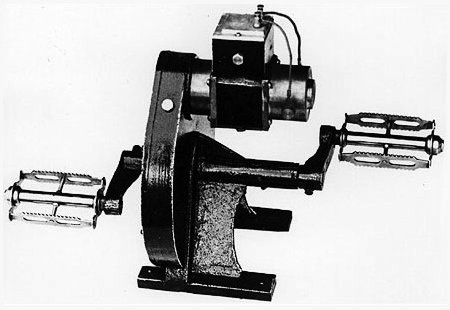
Pedal-operated generator designed by Alfred Traeger
The ABC introduced schools broadcasts by 1935, radio lessons were broadcast in all mainland States. By 1953, over 80 per cent of all Australian schools, State and private, utilised the ABC schools broadcasts as part of their weekly curriculum.
Radio and TV veteran Ian Stimson kindly provided much of the commercial radio history information.
Additional radio content courtesy of George Chapman, who in 1970, was General Manager of 6PM and the CBS Network, then the inaugural Managing Director of 96FM (1980-1984), amongst many other roles including General Manager of TCN Channel 9 and Station Manager of 2UW Sydney.
John Cranfield kindly provided the 6IX story, which is told in detail at… http://watvhistory.com/2009/10/the-6ix-story-by-john-cranfield-part-1/








I am not sure about the date of the closure of 6ML????
Closed Down.
Albany Advertiser Monday 31 May 1943
Station 6ML has been closed down till the end of the war; This has been found necessary owing to the insuperable difficulties in running the Station, brought about by the depletion of staffs for manpower requirements.
The West Australian Saturday 27 November 1943
He said that it had been arranged originally, on the representations of the advisory committee, that stations 6KY, 6PM and 6IX should move up the dial and that 6IX should take the wave-length relinquished by 6ML.
Clarence Serl was 6ML’s Chief engineer in 1930-1933 he then went to Bunbury to establish the first 6BY 1933-1935. 1937 sees him establishing 6WB Kattaning after Clarence Serl left 6ML as Harry simmonds was in charge of 6IX he also had 6ML.
Bryn Samuels was the manager of both Radio Stations he was manpowered to the army serving as a Captain at LHQ Perth,had this not happened the 6ML license would not have lapsed.
Hi Ken,
There is an error as to who was 6ML’s Chief engineer it was not Harry Simmonds but Clarence Searle (serl) He was a graduate from Adelaide University and was the first Chief engineer of 5KA adelaide.
Harry Simmonds became the Chief engineer of 6IX and 6ML after Clarrie Searl left to start 6BY Bunbury when this station closed he went and istalled 3TR Taralgon in Victoria,Then back to 5KA adlaide before going to Kattanning to instal and operate 6WB.
the 6WB callsign is of interest because WB are the initials of the farmer that gave the land for the transmitter site Willem Beeck or Beck.
I worked at 6WB Katanning for a few years up until it was finally killed off in mid 2000 by turning it into a abandoned satellite reciever. At that time much of the original studio equipment from the 1940’s through to the ’70’s was still aroud the place, mostly sitting collecting dust in the disused Studio 2. We celebrated 6WB’s 60th birthday in 1996, as the station commenced in 1936, not as mentioned above. A rear storeroom was chocablock full of old paperwork, sales paraphernalia and most of the extensive record collection, even several 78’s….and endless carts full of corny spots. Anyhoo, in 1998 RadioWest in the form of Stuart Endersby, instructed me to ‘turf the whole lot out’ as I had pointed out the fire hazard as it was a 1930’s weatherboard room on the rear of the weatherboard Transmitter Room…in the middle of a 40 acre wheat paddock…during a very hot summer. As I already knew the demise of the station was underway with the total networking from SomeWhere Else, Townsville mostly, I got on to the Katanning Hysterical Society we had a garage sale/record sale and the proceeds went to housing the valuble equipment with them. That was in 2000.
I should like to see my Grandfather’s name listed also as a Director and Co-Founder of Musgroves Limited. I can see him in the photo of the official opening of 6ML on 30 November 1933. His name was Mandeville O’Doyly Musgrove, he died 9 July 1944 when I was 2 years old.